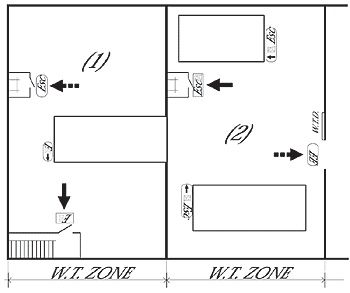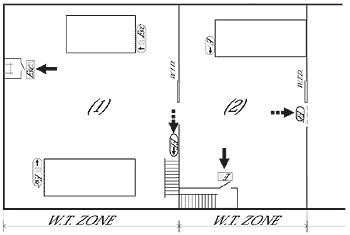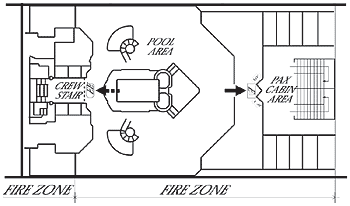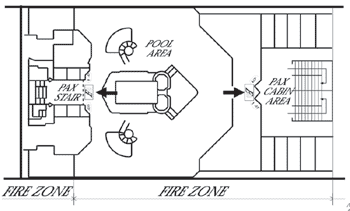|
TABLE 18
Typical arrangement of escape signs in a machinery spaces where:
(1) an inclined stair is the primary means of escape and a vertical ladder is the secondary means of escape.
(2) a vertical ladder is the primary means of escape and a watertight door is the secondary means of escape.
Note:
Inside each w.t. zone additional escape signs are posted to direct crew to means of escape.
| (拡大画面:21KB) |
 |
TABLE 19
Typical arrangement of escape signs in a machinery spaces where:
(1) a vertical ladder is the primary means of escape and an inclined stair is the secondary means of escape.
(2) an inclined stair is the primary means of escape and a watertight door is the secondary means of escape.
Note:
Inside each w.t. zone additional escape signs are posted to direct crew to means of escape.
| (拡大画面:17KB) |
 |
TABLE 20
Typical arrangement of escape signs in a passenger open deck area where a pax stairway is the primary means of escape and a crew/service stairway is the secondary means of escape.
Note:
In all passenger cabins a placard showing the location of the assigned Assembly Station and the two means of escape to it with respect to the cabin is posted on the interior side of the cabin door.
| (拡大画面:26KB) |
 |
TABLE 21
Typical arrangement of escape signs in a passenger open deck area where both primary means of escape and secondary means of escape are passenger stairways.
Note:
In all passenger cabins a placard showing the location of the assigned Assembly Station and the two means of escape to it with respect to the cabin is posted on the interior side of the cabin door.
| (拡大画面:26KB) |
 |
To be discussed
|